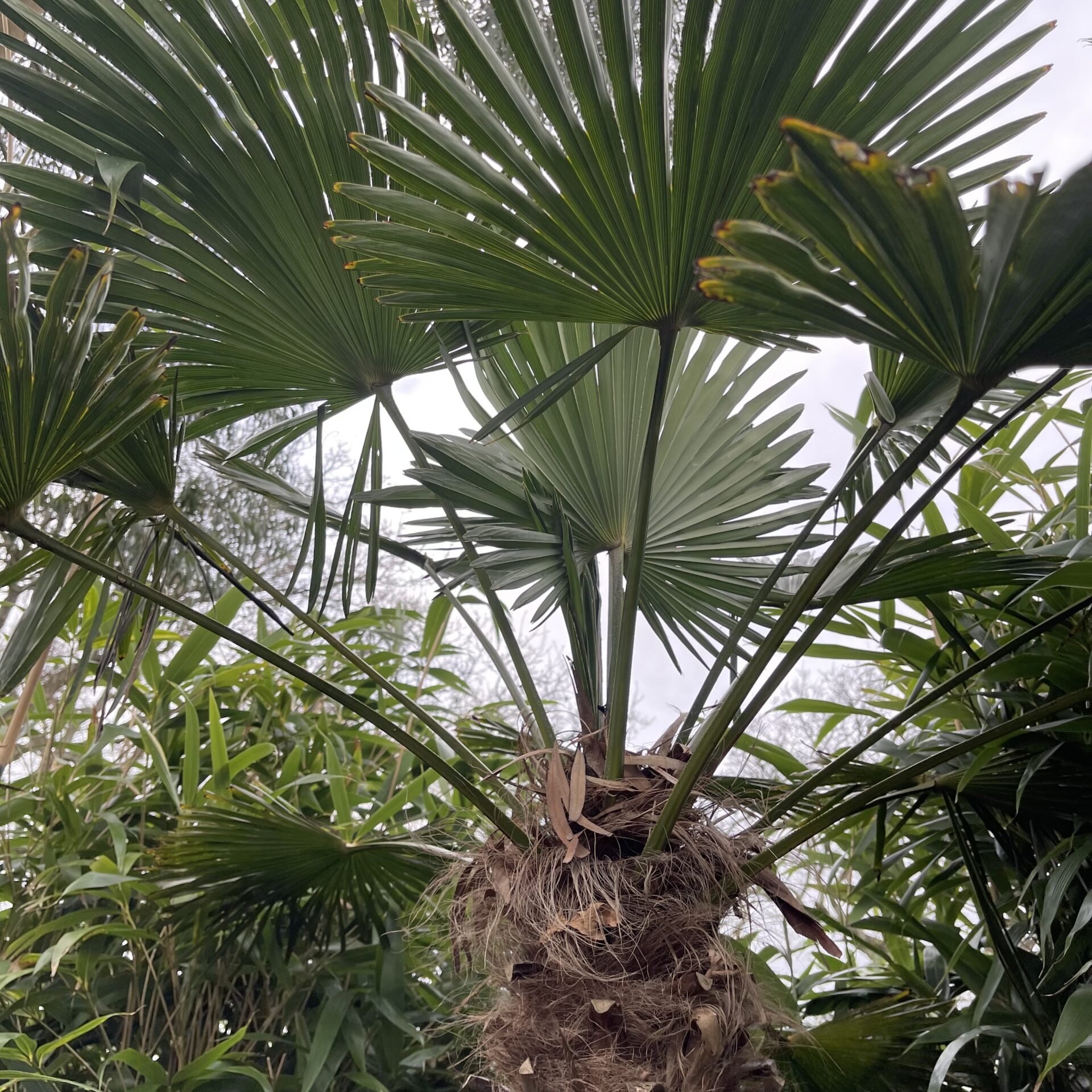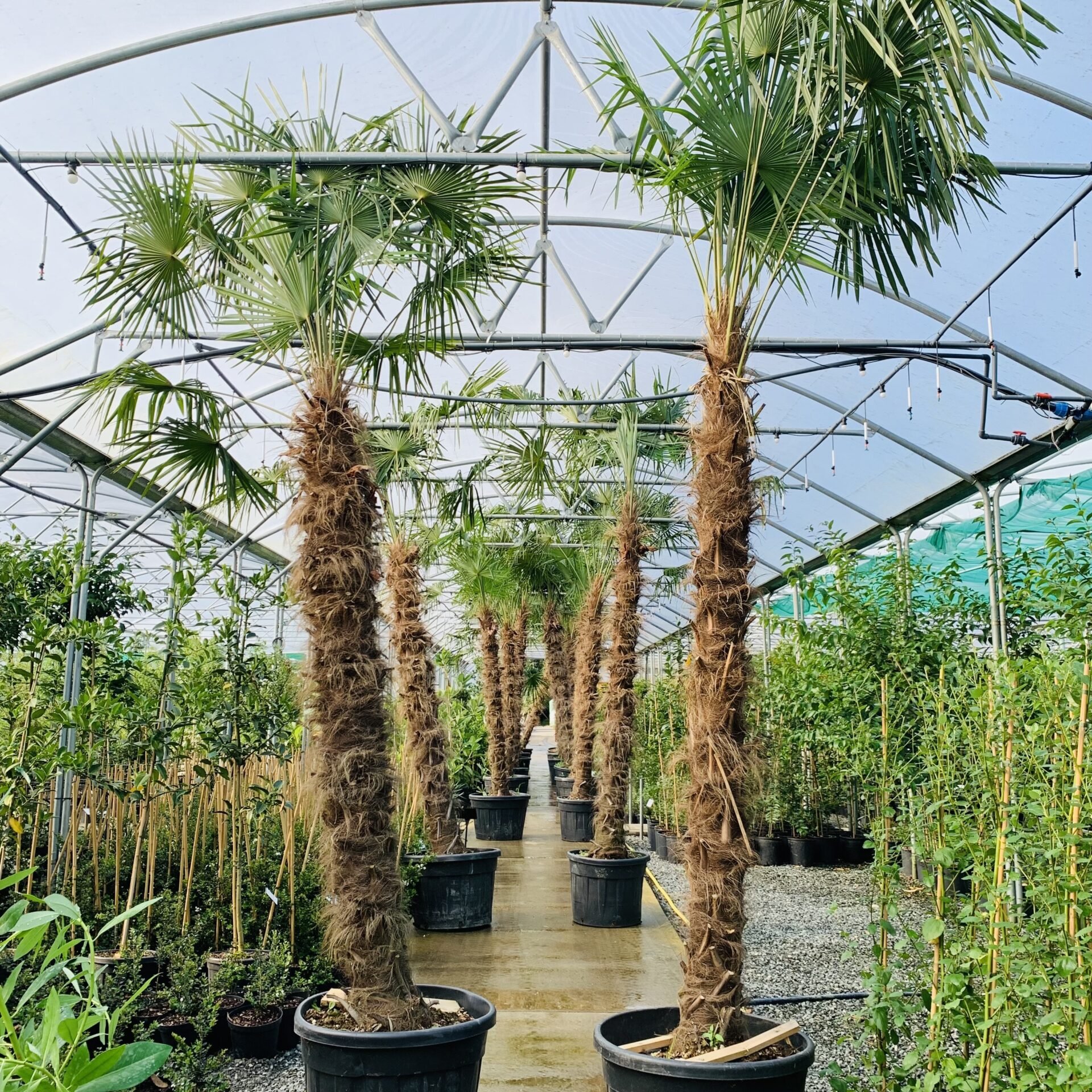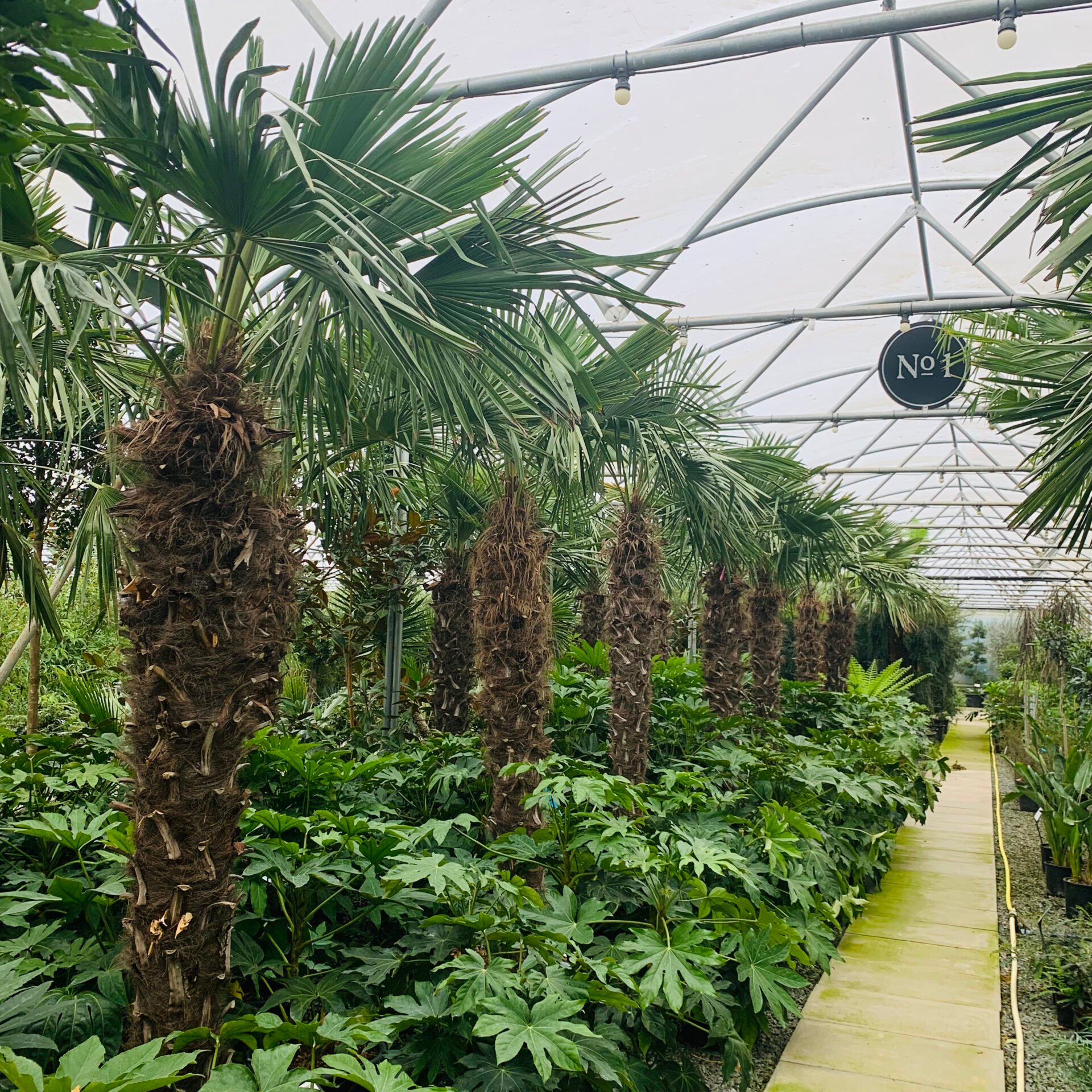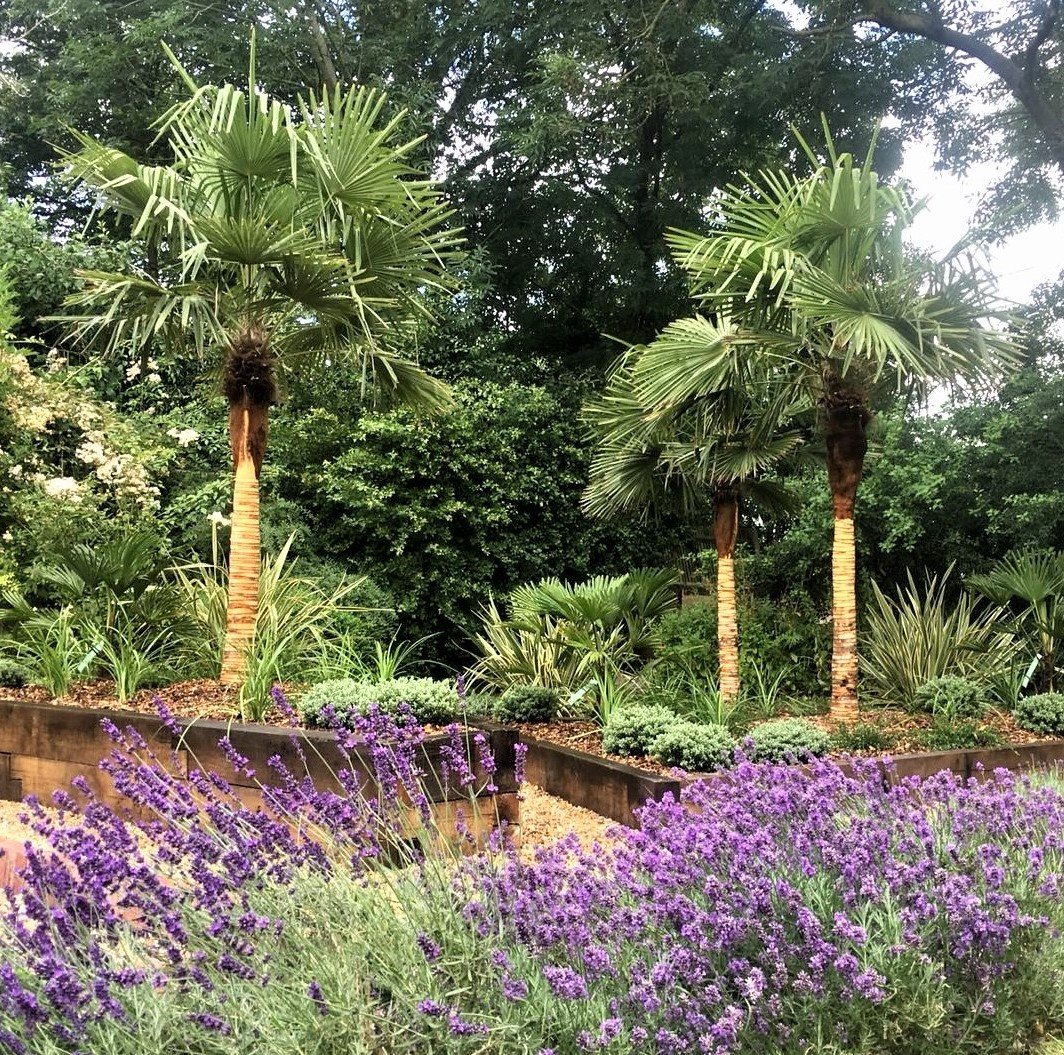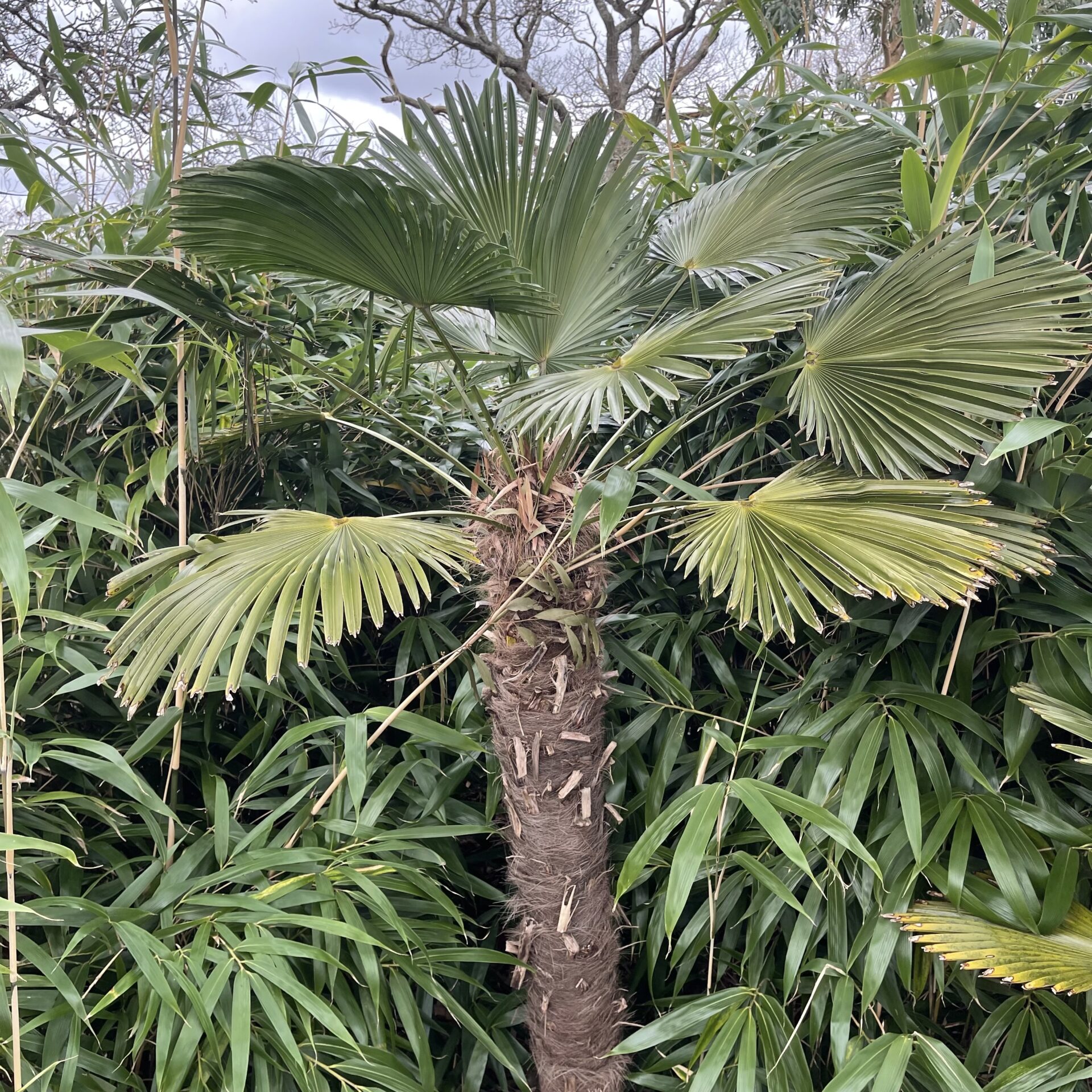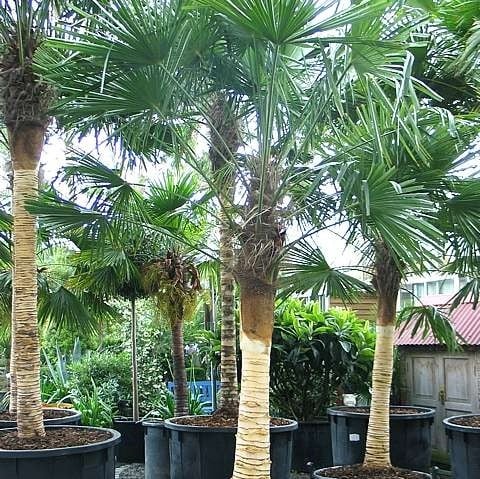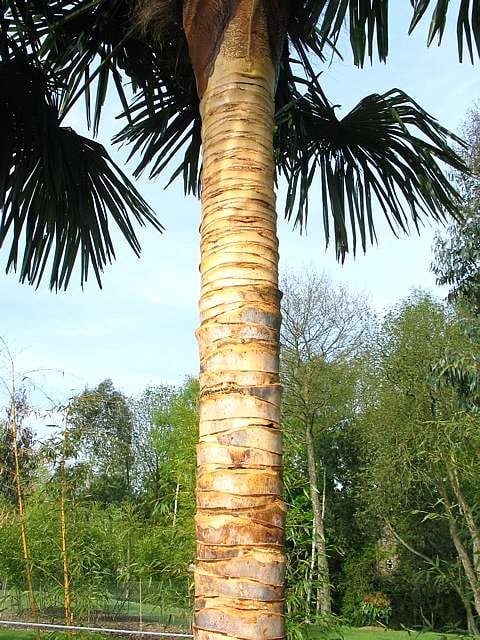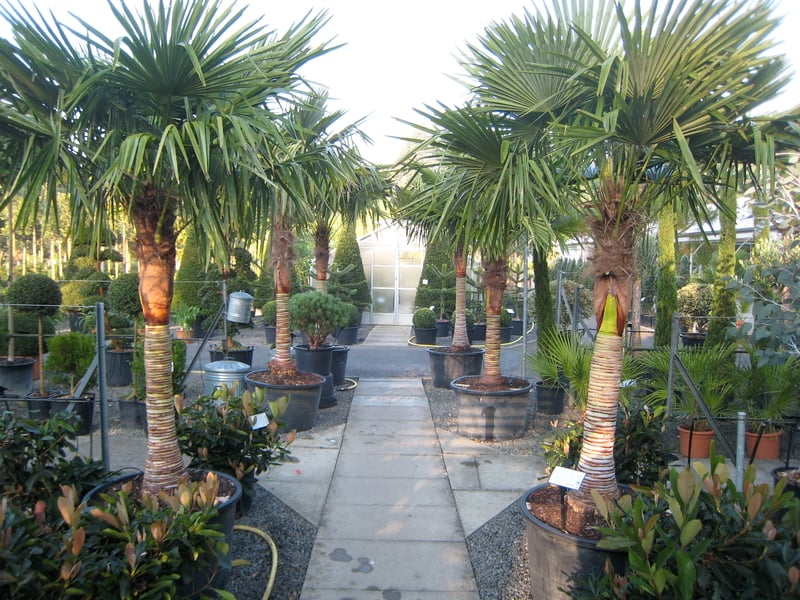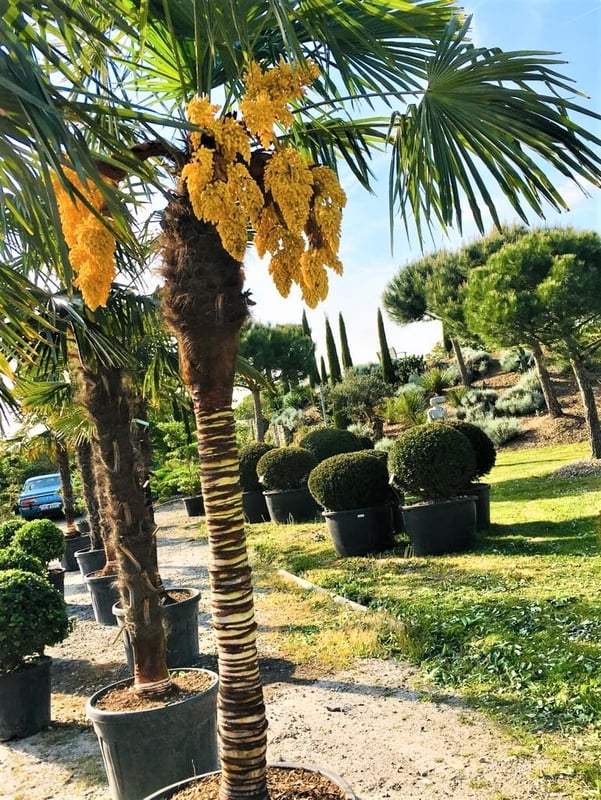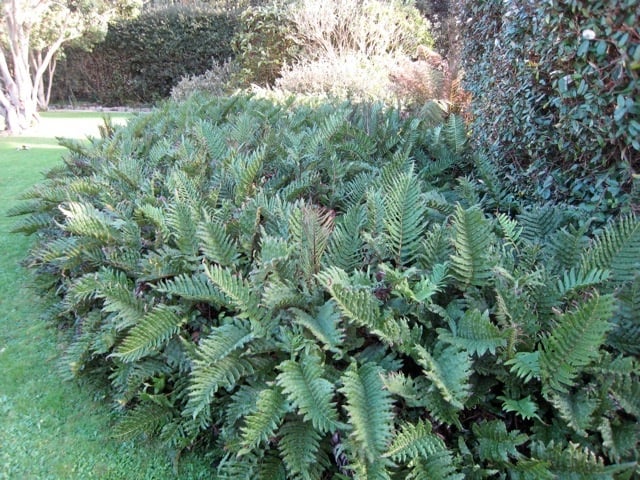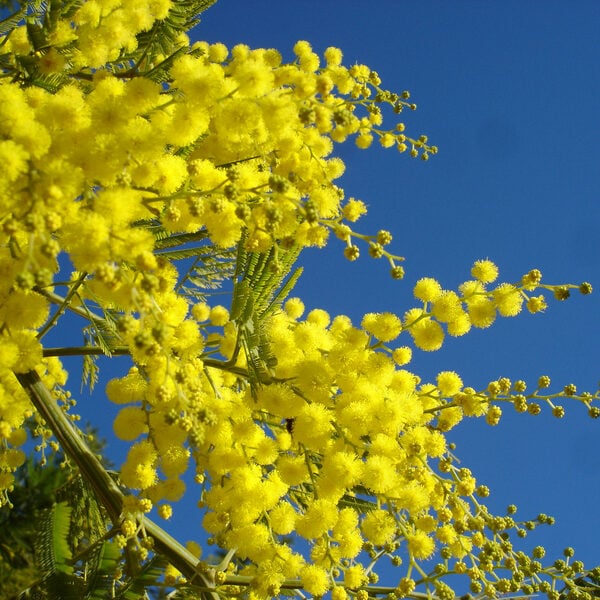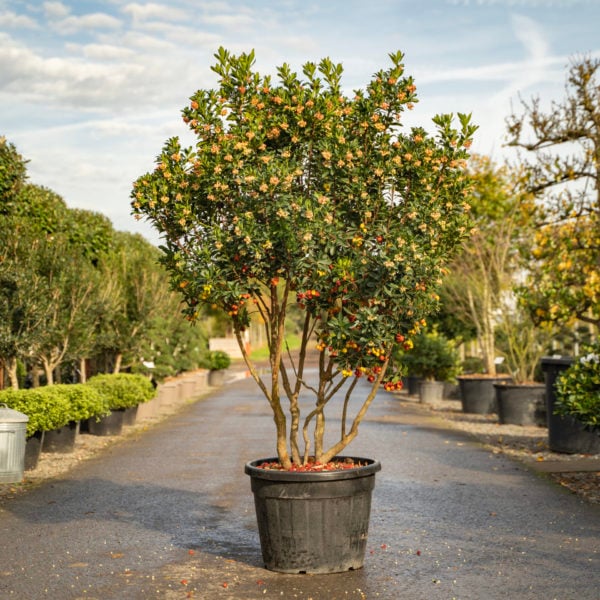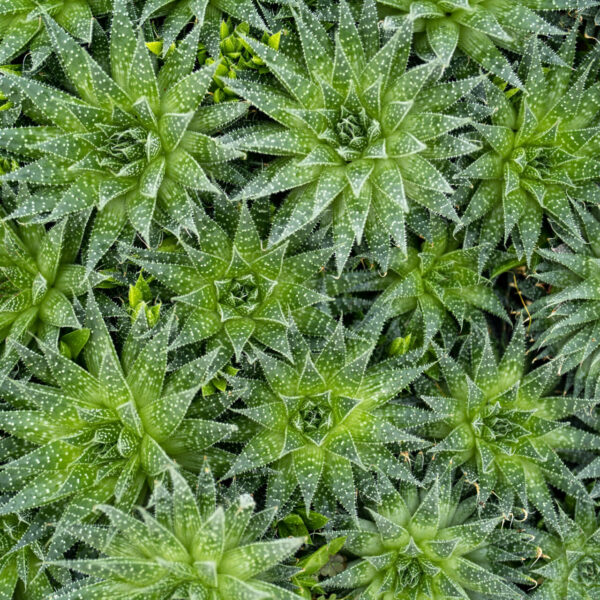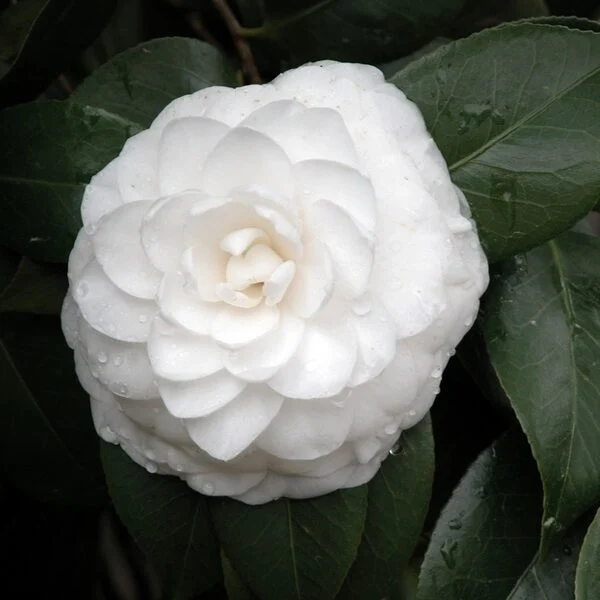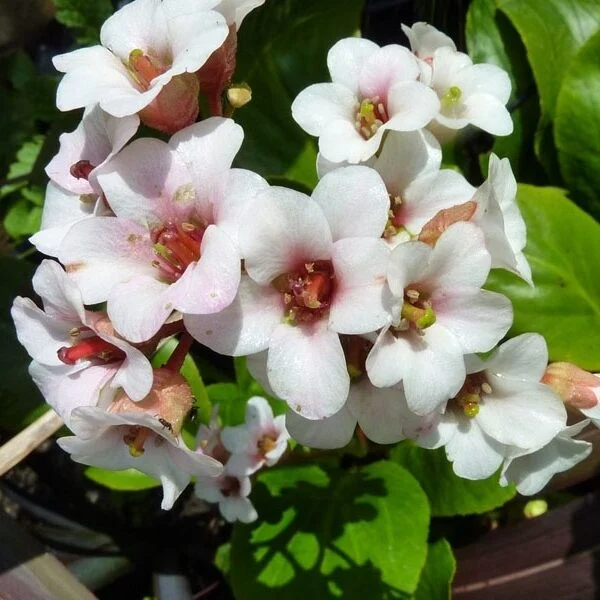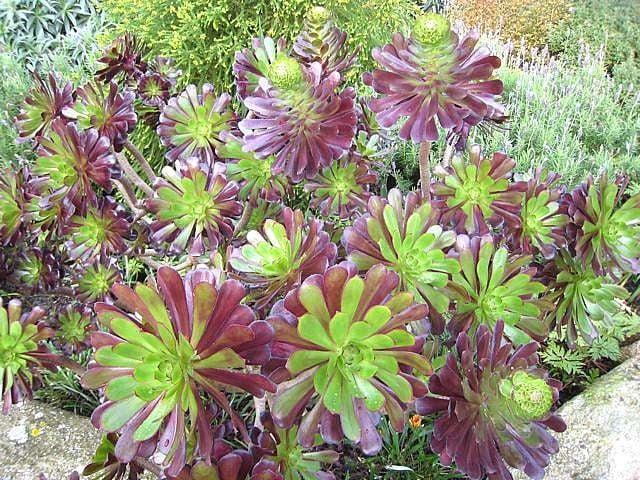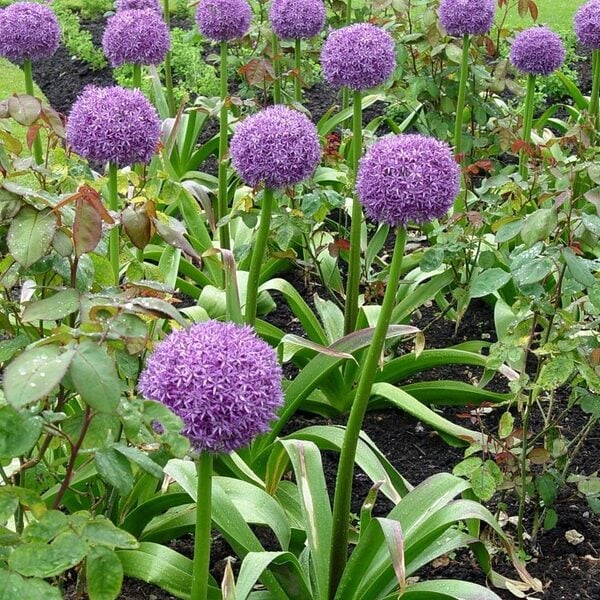Trachycarpus fortunei (Chusan Palm)
The corner stone of all exotic gardens in Britain. Tough as old boots, grows to 20ft after 30 years. We usually remove the hair on the trunk (if you were wondering). Please contact us for stock availability and sizes.

Hardiness level Green
A proper palm that grows as happily in Sussex as in Shanghai. Big fat hairy trunk with a mass of palmy leaves on top and in the spring a marvellous display of haddocks. What more could one ask for? They're not really haddocks. Haddocks is what we call the big floppy yellow flowers and to be more correct, maybe we should call them smoked haddocks because they're yellow. If there are enough plants close by for cross fertilisation, seed will be produced (like little grapes) and they will germinate and you will have hundreds of little palm seedlings all over the garden. There are a couple of important points to be made about these trees : 1. Getting the position right is vital and 2. Understanding what can be accomplished - aesthetically - by removing stuff. The position thing is : avoid wind. Wind tears the leaves and the result is not good. If you can bear to (I can't), examine the ones on the lawn in front of The Pavilion in Brighton. A fine example of where not to grow a Trachycarpus. Battered to buggery.
The nicest ones I've ever seen are in woods where there's no wind so the leaves don't get damaged and the low light causes the leaf stalks (petioles, properly) to elongate giving the whole head the appearance of being bigger and more elegant. Now remove the hairy stuff (see link at bottom of page), all the old flowers (okay, haddocks) and any old, yellow, brown or tatty leaf and cor blimey - is this really the same plant as the ones in front of The Pavilion? An astonishing difference. Removal of the hairy stuff reveals the rather lovely stripy trunk but also reduces the diameter of the trunk thereby producing a better proportioned plant. This is Creative Maintenance at its most enjoyable. In case you're wondering - removal of the hairy stuff does not affect the plant's hardiness. It's reasonable to assume a connection between the world's most frost tolerant palm tree and a warm hairy trunk. There appears to be none. There's a remarkably similar looking palm (with a similarly hairy trunk) called Trithrinax. They can be found growing in equatorial Brazil.
If you watch the attached video of Colin removing the hairy stuff, you could be forgiven for thinking there must be a use for it. It's native to northern China where apparently there's a tradition of using the fibre to make hats. It's also used to make string. It's available from Japanese friends of ours but comes out a bit pricey. Apart from an unusual stocking filler for your palm mad friend, hard to know how to market such a thing.
Notes on hairy stuff removal : The hairy stuff is a series of hairy cylinders connected to the trunk all round the base. Attached to this hairy stuff is a leaf at the top. Technically, this hairy cylinder is known as the Crown Shaft. When a leaf on (for example) a Coconut palm dies, the leaf plus the entire crown shaft falls off leaving a nice clean trunk. Not so with Trachycarpus and many other palms. In our case, the leaf goes yellow, then goes brown then hangs down looking a bit of a mess and all the old dead leaves form a kind of petticoat round the trunk. The plant doesn't care one way or the other but we do. The rather lengthy (but tremendously rewarding) process of using an old bread knife to remove the hairy stuff is what happens naturally with many other palms (such as Coconut). This last paragraph might be of some assistance with the video.
This is mighty tolerant of almost all soils although in very chalky soil, the leaves can go a bit yellow. Growth rate? Variable. In the shade they tend to get drawn up, creating a taller and more slender trunk. In direct sun, the trunk will tend to be stouter and shorter. From the smallest plants we sell (about 3ft over all) to 10ft over all, 10 to 15 years.
Propagated by seed.
N.B. When clipping several plants with the same tool, have a bucket containing a 5% bleach solution and swish your blades around for 30 seconds between plants to sterilise them. This will help avoid the chance of cross contamination of disease.
As with all woody plants, plant high, exposing as much of the taper at the base of the trunk as possible. Allowing soil to accumulate round the base of a tree can be fatal. Keep very well watered when first planted.
Additional Information |
|
|---|---|
| Soil Type | |
| Light | |
| Plant Type | Big Leaves / Exotics, Evergreen, Flowers, Grown by Us, Palms, Screening Plants |
| Continent of Origin | |
| Specialist Plants | |
| Features | |
| Situation | Coastal, Conservatories, Mild City Gardens, Plants for Pots, Sheltered Garden |
| Flower Colour | |
| Hardiness | |




